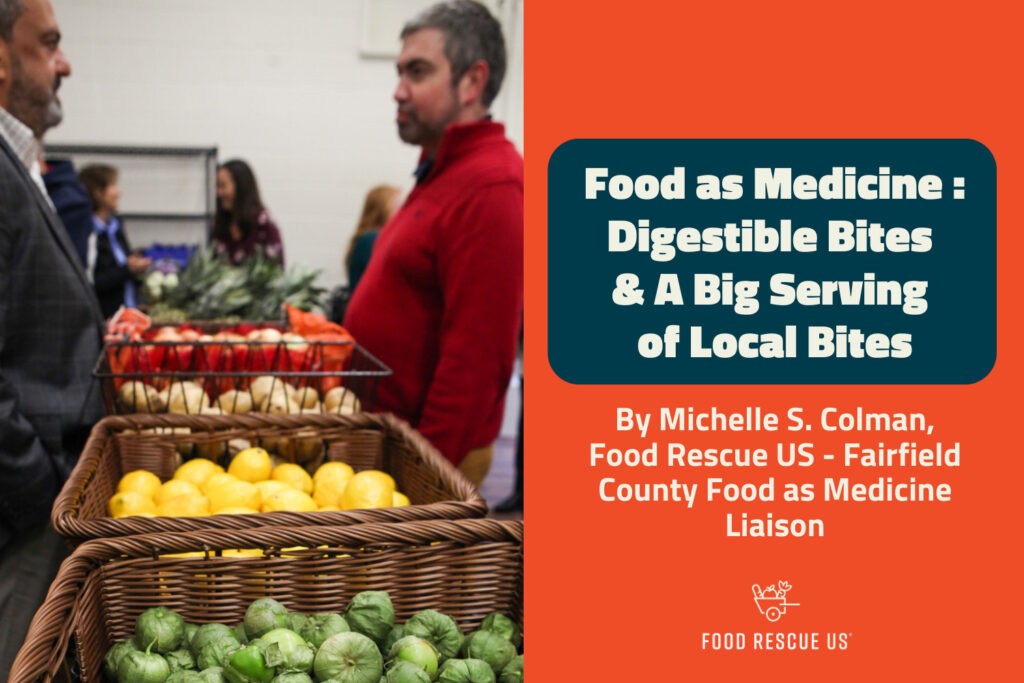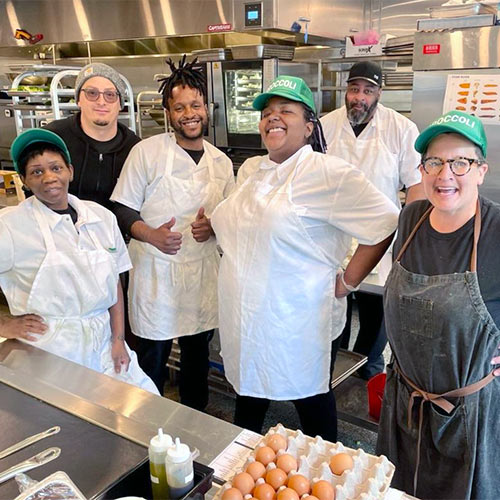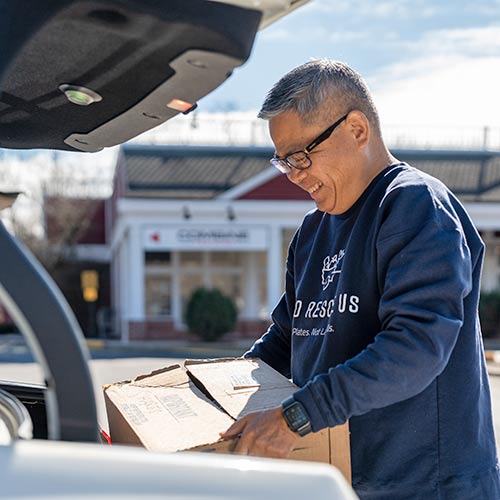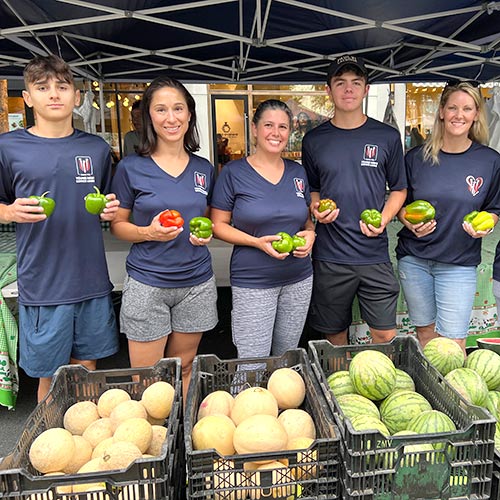Food as Medicine: Digestible Bites (with a big serving of Local Bites) – November 2023
The shorter version:
- A newly launched, first-of-its-kind Food is Medicine Institute institute aims to address a glaring gap in the medical system by working to integrate food-based nutrition interventions into health care to treat disease and advance health equity.
- USDA invests $52 million to improve dietary health and access to fresh fruits and vegetables for eligible families.
The longer version:
The Food is Medicine Institute Launch
A newly launched, first-of-its-kind institute aims to address a glaring gap in the medical system by working to integrate food-based nutrition interventions into health care to treat disease and advance health equity.
The Food is Medicine Institute at the Friedman School of Nutrition Science and Policy at Tufts University establishes a university-wide initiative aimed at transforming health care through scalable food-based interventions such as: medically tailored meals and prescriptions for produce; nutrition education for doctors; and clinical care, electronic health record, and reimbursement pathways for nutrition-based tools to help treat or prevent diet-related illnesses such as heart disease, diabetes, and certain cancers and complications during pregnancy. The Institute will advance Food is Medicine research, patient care, and community and policy engagement nationwide and beyond, and be a leader in educating the next generation of professionals in the Food is Medicine space.
USDA invests $52 million to improve dietary health
Some exciting news this week from the U.S. Department of Agriculture. The USDA just announced a $52 million investment to improve dietary health and access to fresh fruits and vegetables for eligible families. The funds support efforts across three National Institute of Food and Agriculture competitive grant programs that make up the Gus Schumacher Nutrition Incentive Program.
Dr. Chavonda Jacobs-Young, the USDA Chief Scientist and Under Secretary for Research, Education and Economics commented, “Investments like this enable people to afford and eat healthy fresh fruits and vegetables so they don’t have to make a choice between healthy eating and cheaper less healthier options.”
The objectives of the new program called NTAE (which stands “Nutrition Incentive Program Training, Technical Assistance, Evaluation, and Information”, of course!) are to create an integrated system of implementation and evaluation support, integrating engagement of GusNIP audiences into 2.0 governance, providing and continuously improving training and technical assistance services, assembling partnerships and technologies, conducting an evaluation of existing projects, and advancing the evidence with continued scientific rigor.
In 2.0, the NTAE will contribute to the long-term goal of making safe, nutritious food available to all Americans.
Local Bites
After years of working in pharmaceuticals, with a focus on patient education and community engagement, Douglas Ordoñez combined his passions for improving health and strengthening communities to join the Food Farmacy of Greater Danbury.
This charming Tennessee transplant is dedicated to his Danbury community and fashioned the food farmacy in a southern country store vibe, “with a little bit of everything.” Ordoñez is determined to not just to fill medical “prescriptions” with nutritious food but to provide resources, education, and community to inspire lifelong healthy habits to patients and their families.
As the project manager of the Food Farmacy of Greater Danbury, Ordoñez oversees a massive collaborative effort between United Way, Nuvance Health, Connecticut Institute for Communities, Community Action Agency of Western CT and UConn Extension. With a $1,050,000 grant through Congressionally Directed Spending, thanks to the support of Senator Murphy and Senator Blumenthal, Ordoñez and his collaborators launched the Food Farmacy on November 1st.
The Food Farmacy is a grocery-style food pantry located inside the Danbury Community Center, at 12 Boughton Street. Physicians and health care providers prescribe healthy foods over a nine-month period for 100 participants chosen from the Connecticut Institute For Communities (CFIC) and Danbury Hospital/Nuvance Health system. The participants are identified based on medical diagnosis and screening for food insecurity and are contacted by Community Health Workers from both organizations and asked if they would like to participate in the program.
Food Rescue US had the great pleasure of talking to Ordoñez about his goals, lessons learned, the important significance of food to identity, and some of his favorite foods.
Food Rescue US: Food Farmacy is such a great example of collaboration. Can you give some tips from your experience?
Douglas Ordoñez: I have to say it is a combination of communication and patience. Every single partner we work with has their own system. So, working together isn’t just about maneuvering through your systems but dealing with others’ processes. As a collaborative team, our steering committee meets once a week. When we confront issues, like HIPAA compliance or patient data, we can say, “Here is the issue, let’s discuss as a team. Do we need to bring in someone else?” Everyone shares their ideas, contacts, and solutions. That is what is so great about having these partners.
Unfortunately, in our country, healthy food is much more expensive than processed foods. We want to do more than just provide people with food, we want to provide nutritious food. That is a big challenge.
FRUS: Did you model the store off of others (either specific grocery stores or other food farmacies)?
DO: A bit of both. Our focus is on a specific medical need, so that really has influenced the way we stock what we offer, what fruits and vegetables, canned goods, low sodium, and low fat foods we offer, while trying to avoid sugar, when we can.
I visited two food farmacies in Poughkeepsie and Hartford to see how they were set up and what I could adjust for our specific community’s needs. Both were extremely generous in sharing their experiences and one of the biggest takeaways I had from those visits was to make this a place people want to come to. I wanted to make it comfortable so that coming here is something they want to do and not feel it was charity or feel any pressure or shame. I was thinking, “Where would I like to shop?” Growing up in Tennessee, I was inspired by the old time country stores which had a little bit of everything. That’s what I tried to create here. We decorated with rustic-looking wood furniture to make our small space feel “farm” inspired. I really felt it was important to consider that emotional aspect and to create a specific vibe.
FRUS: What is on offer at the farmacy?
DO: We have a 360 degree approach to care. People can come in and shop here but we also ask them to meet with a nutrition consultant once a month in order to better understand how to do things like plan a balanced meal and read a label. It’s amazing how someone might look at a label and think it is low salt but forget to look at the serving size. We also have access to a social worker if they need additional social support to combat issues that may be affecting their food budget.
Beginning in 2024, we will offer cooking classes working with the wonderful Heather Peracchio MS, RDN, CD-N from the UCONN extension in Bethel. We really want to address the whole family, not just the specific patient. We want to help influence healthy eating and behavior to the next generation. If the parents know how to offer healthy meals, the kids will eat healthier.
We want to teach our customers how to use ingredients never used before. Beyond that, we want to show them how we can take what they’re used to and make it healthier. We stock a lot of herbs and seasonings. In Danbury we are lucky to have such a diverse population, but that can also be challenging when stocking things like low sodium versions of Sazon seasoning, soy sauce, worcester sauce, etc. We want to offer what is familiar but help shift their behaviors.
Previously, I worked in pharmaceuticals with a focus on obesity. It’s important for people to understand that salt is an important micronutrient that our body needs and healthy fats are also important for our bodies to function. The problem is that scientists have taken over food in the lab and made these highly processed, extremely inexpensive options that have way too much of both salt and fat. It’s literally when too much of a good thing becomes bad.
FRUS: What’s your best piece of advice going into the holiday season?
DO: When people say “but this is traditional” I say new traditions are started every day! As a southern boy, I love my traditions. Food is a great way to connect emotionally to the family I am missing. But when food traditions are unhealthy, I say, let’s start a new one and make it healthier and special. So when I make collard greens to feel closer to home, I don’t use ham hocks, I use smoked turkey legs or wings as they have less fat. I am also really sensitive about respecting people’s cultures. We want to offer better, culturally significant options.
Thanks,
Food Rescue US – Fairfield County Food as Medicine Liaison
If you enjoyed this post, you might also like last month’s Food As Medicine post.




